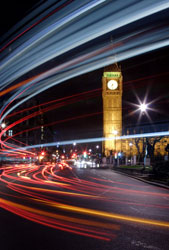2050: A City Odyssey
Cities in developed countries no longer follow the same patterns of growth. Trends we are used to, such as migration from rural areas to cities are beginning to change. This raises questions as to whether the spatial and activity patterns we have seen so far in metropolises will continue along the same lines. If not, what will change and how will it affect our society? These were some of the questions addressed by the TIGRESS project. The project was co-ordinated from Paris in conjunction with RIKS (Research Institute for Knowledge Systems) in the Netherlands and the University of Newcastle (UK). From a theoretical point of view the principal innovative features of EUROSIM are that it provides a combination of networking principles with spatial proximity principles. Networking has been modelled in applications in sociology and in economics, but without integrating the spatial dimension. Furthermore, EUROSIM considers multiple levels when analysing the outputs; it looks at the macro-structure of a system as well as in the dynamics of individual cities. One of the applications of the model is that it could help policy makers think about urban futures in a way which takes account of knowledge about the dynamics of activities in urban systems. The model could be applied to the study of local or supra-national change, cross border migration or the effects of European enlargement. It would be interesting in the future, says the report published on the project, to use the model in order to test the role of political or economic macro-actors on the evolution of cities. One of the most surprising findings in the report was that although London and Paris, the two largest European cities today, remain at the top of the European urban hierarchy in 2050, London clearly dominates Paris. The advantage of London is that of benefits of a larger regional and national supporting base. The full report is available at http://www.tigress.ac/reports/final/eurosim.pdf







